CSA Vegetable Shares
Weekly Share Options -
At Cobble Creek Farm we offer half share and full share options for an eighteen week period, beginning mid-June and running through the end of October. The half share is for a small household (1-2 people), while a full share is more suited for a household of 3 or more. Customers who sign up for a share are guaranteed the available vegetables for that week. Each week share members will receive a bag of approximately 5 - 8 organic, seasonally-grown vegetables fresh off the farm. See the share samples below for an idea of what will be available throughout the season. Customers also have the option of adding fresh farm eggs to their weekly shares in addition to maple syrup. We also provide recipes via email and blog that utilize the various vegetables distributed on a weekly basis.
2023 Vegetable Share Options and Prices:
Half Vegetable Share -
Half Vegetable Share with 1 doz. eggs -
Full Vegetable Share -
Full Vegetable Share with 1 doz. eggs -
Full share with 2 doz. eggs -
2023 Vegetable Share Options w/CCF Maple Syrup:
Half Vegetable Share with 1 quart of Maple Syrup -
Half Vegetable Share with 1 doz. eggs and 1 quart of Maple Syrup -
Full Vegetable Share with 1 quart of Maple Syrup -
Full Vegetable Share with 1 doz. eggs and 1 quart of Maple Syrup -
Full Vegetable Share with 2 doz. eggs and 1 quart of Maple Syrup -
Cobble Creek Farm
407 Hardscrabble Rd.
Olmstedville, NY 12857
Pick up location for 2023:


Distribution Day at CCF!
Early Spring
- Kale (baby kale)
- Lettuce (spring mix)
- Hotshot blend mix greens
- Arugula (Astro and Wild)
- Spinach
- Radishes
- Chard
- Rhubarb (as available)
- Snow Peas and Snap peas (late Spring)
- Shell Peas (late Spring)
- Turnips
Summer
- Lettuce Heads (mixed lettuce options)
- Kale (several varieties)
- Arugula
- Beets
- Bush Beans (several varieties)
- Carrots
- Summer squash (zucchini and yellowneck)
- Parsley (curly and flat leaf)
- Onions (yellow, sweet)
- Basil
- Thyme
- Oregano
- Dill
- Wild Cherry Tomatoes
Late Summer/ Fall
- Lettuce
- Kale (several varieties)
- Cucumbers (market and pickling)
- Tomatoes (sauce and cherry)
- Onions (yellow, sweet, and red)
- Carrots
- Garlic
- Arugula
- Parsley (curly and flat leaf)
- Peppers (bell and hot)
- Pumpkins (cider jack, jack straw, and baby pam)
- Squash (delicata, acorn, butternut, spaghetti, and winter)
- Potatoes (red and yellow)

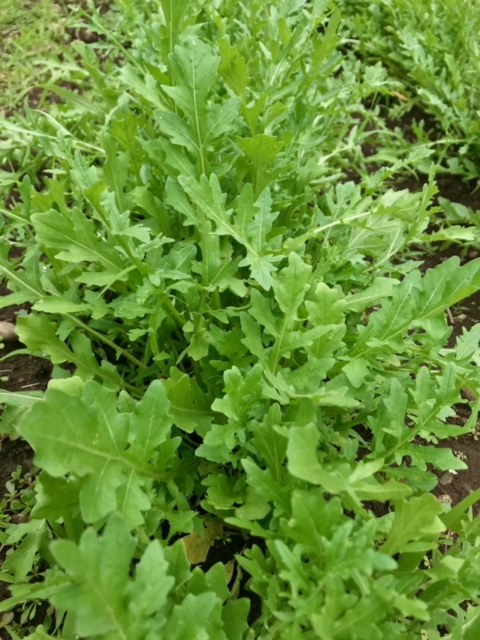
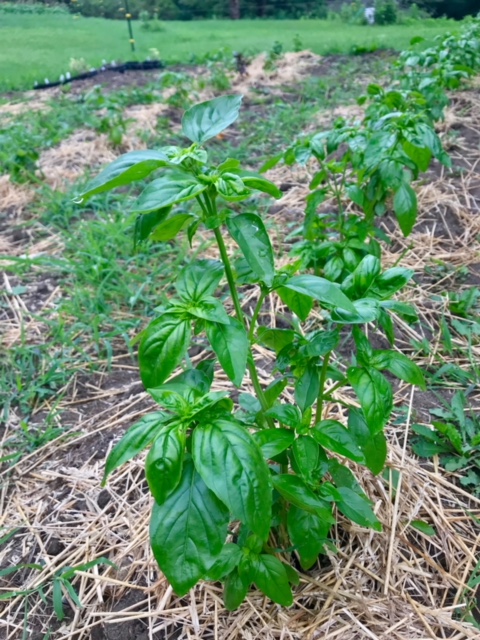
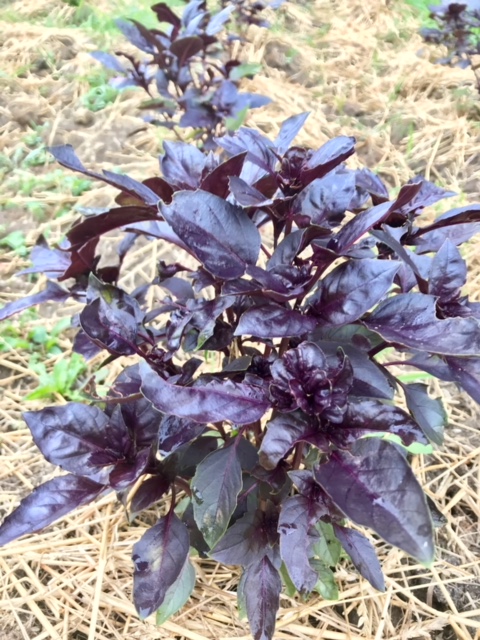





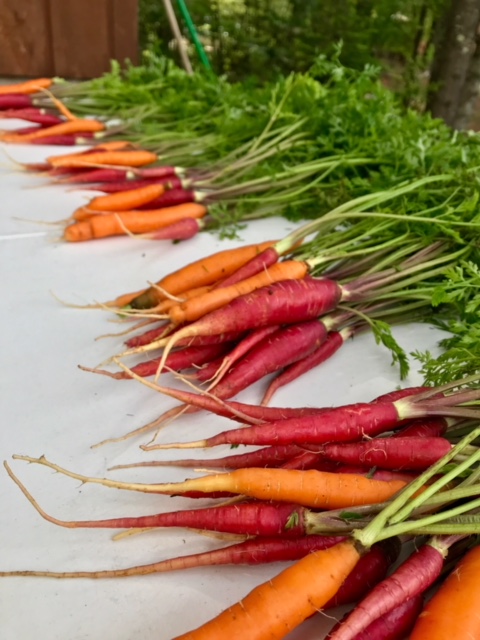
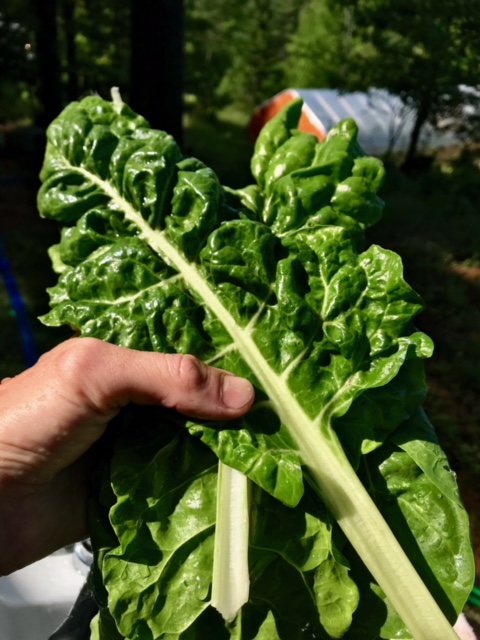
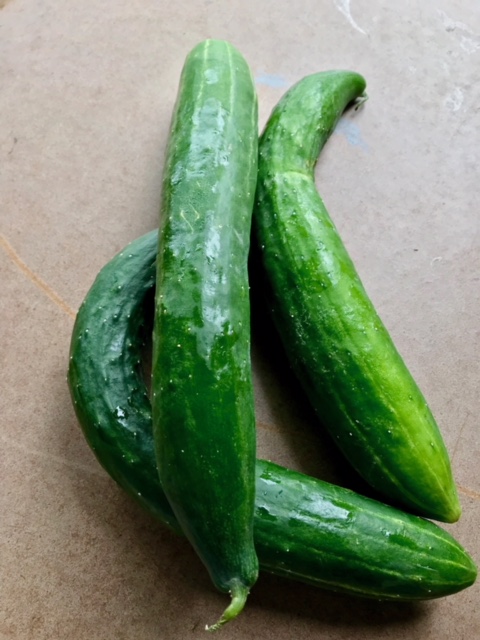
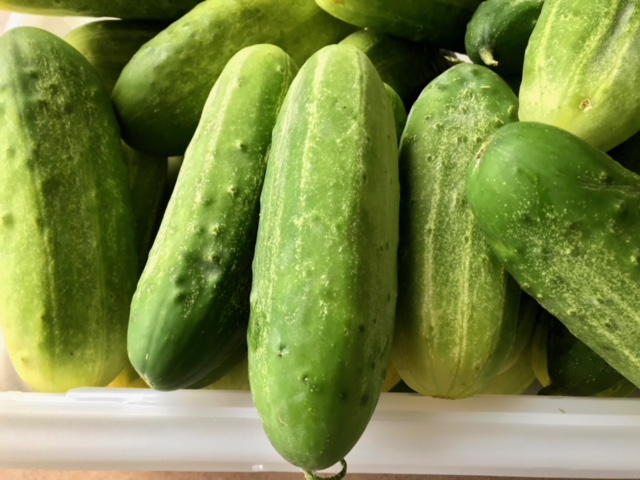
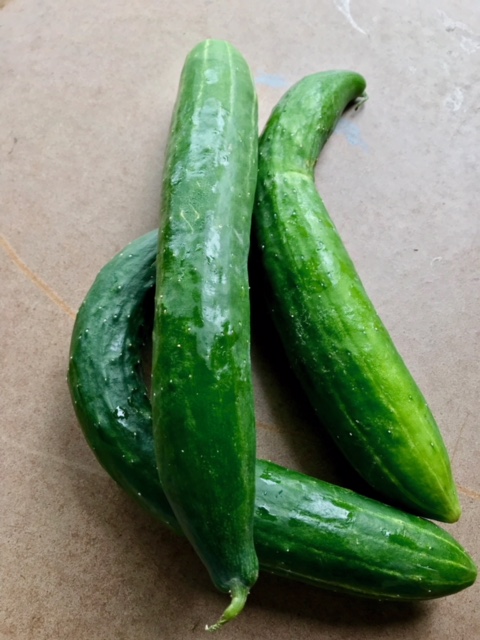
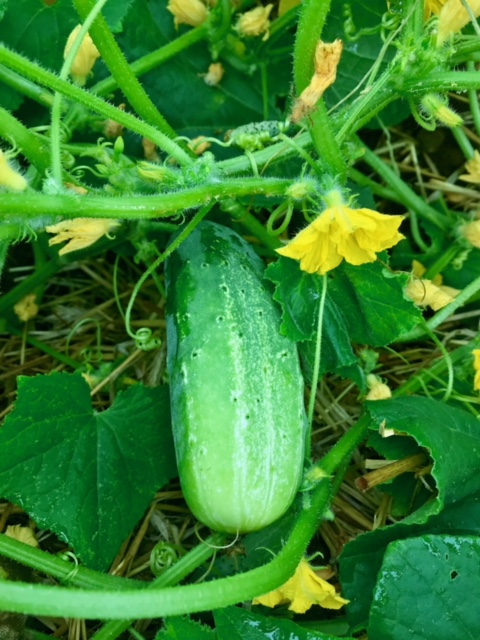
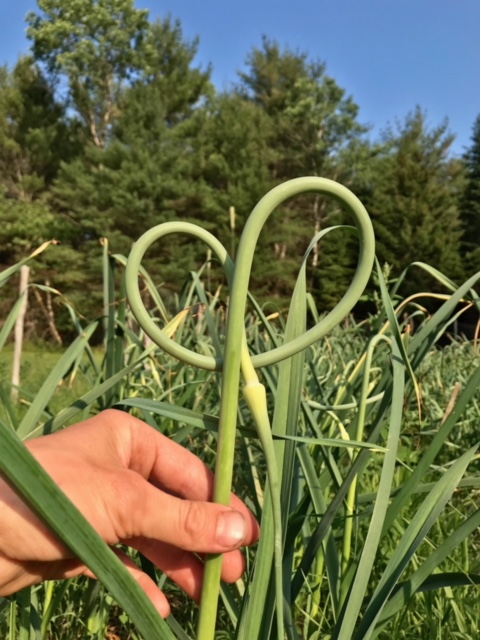

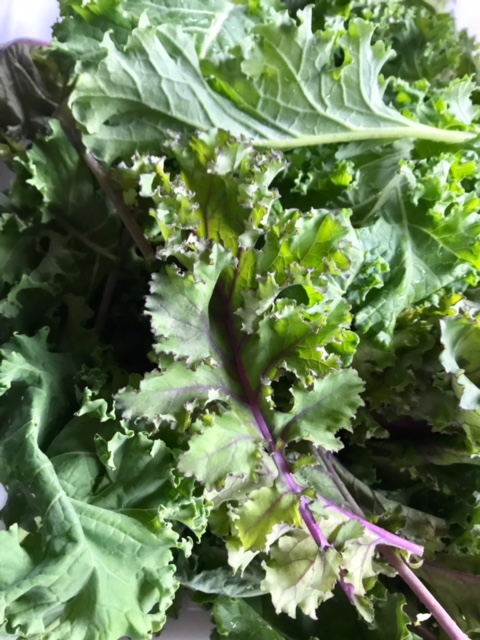



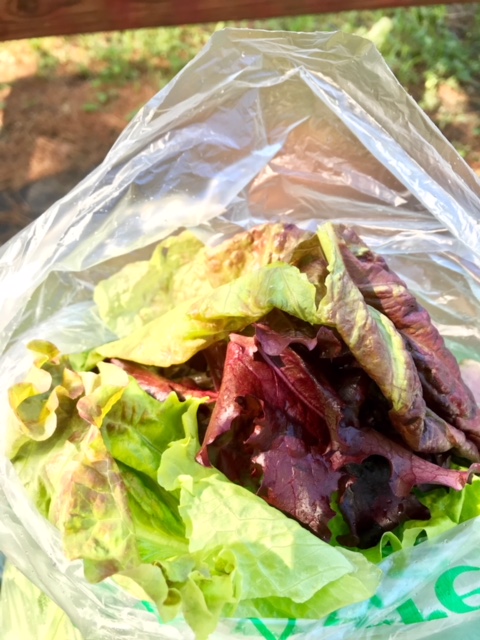



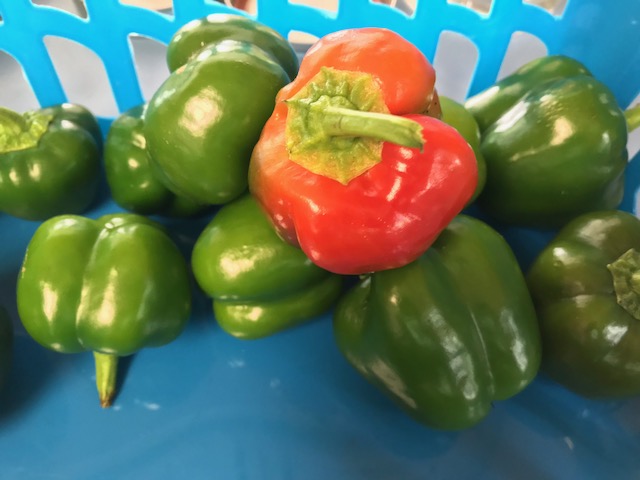
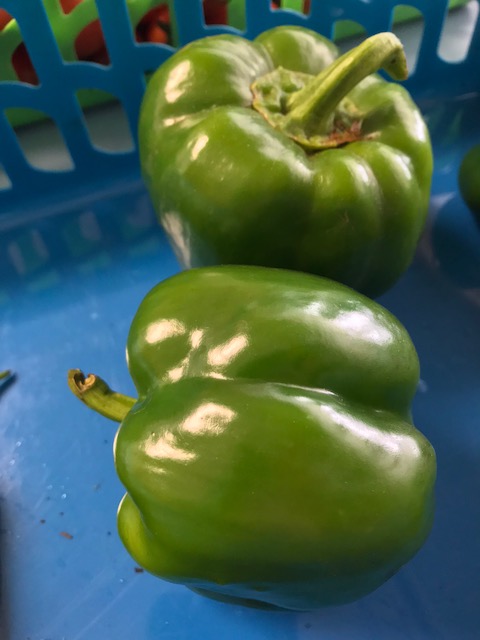

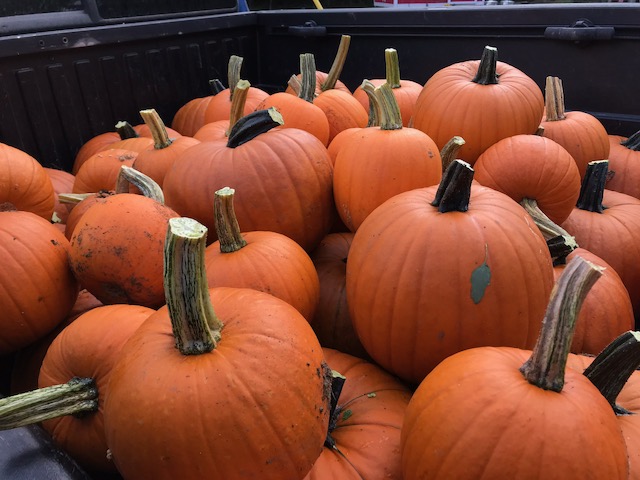
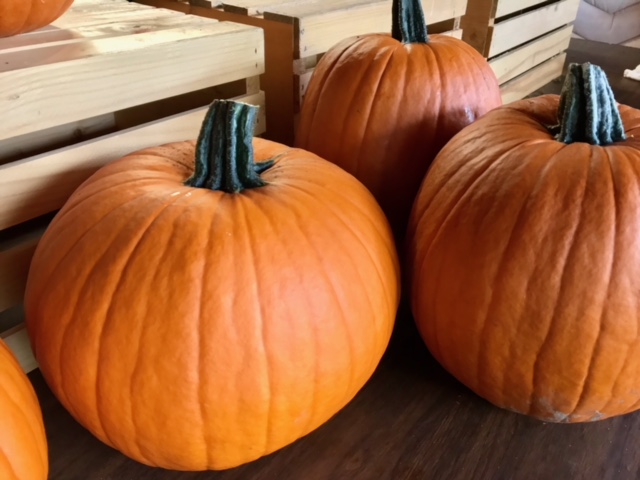

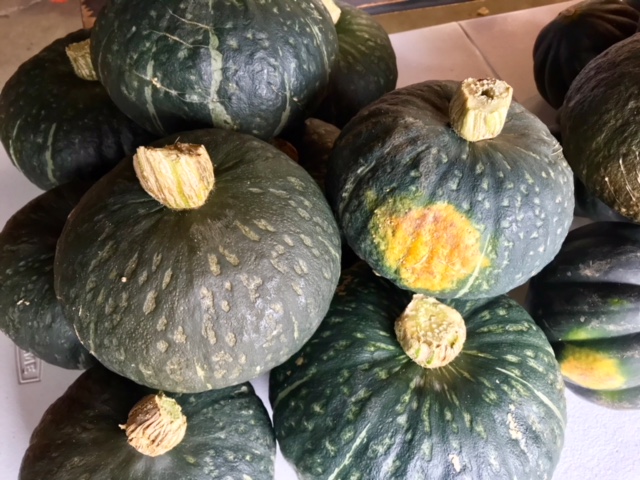
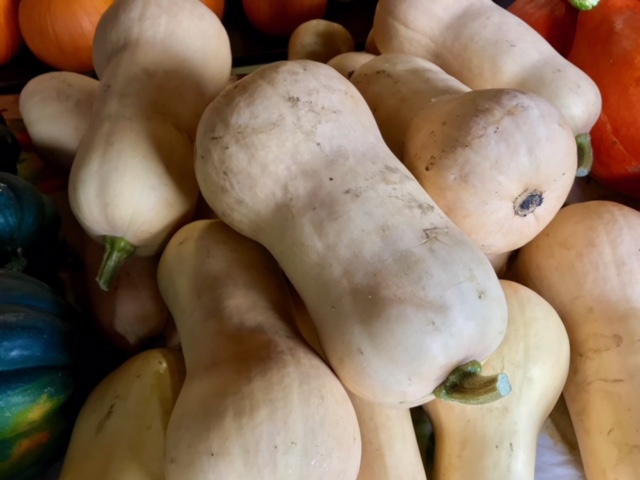
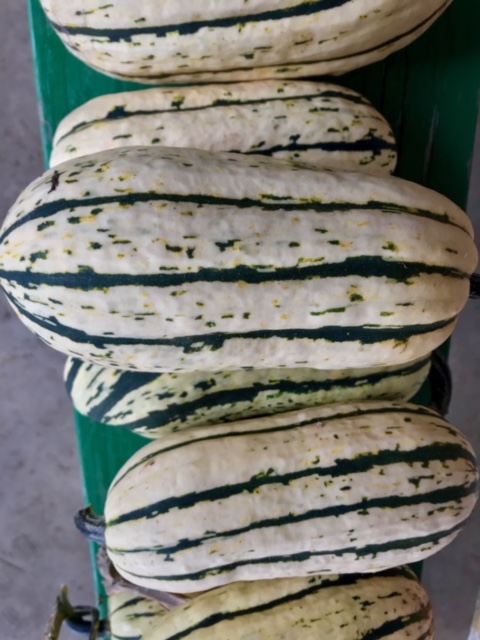

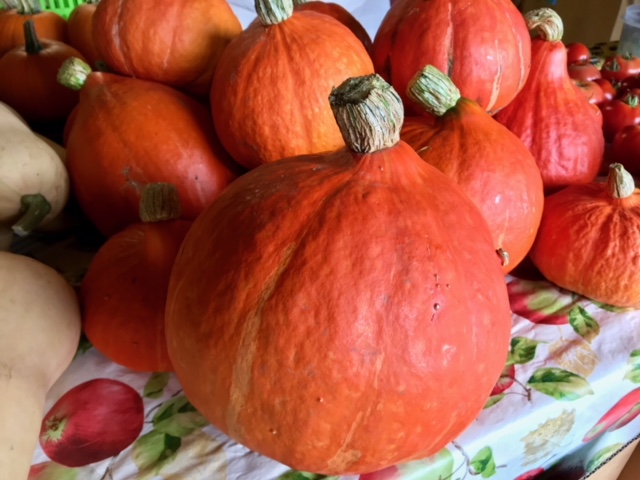

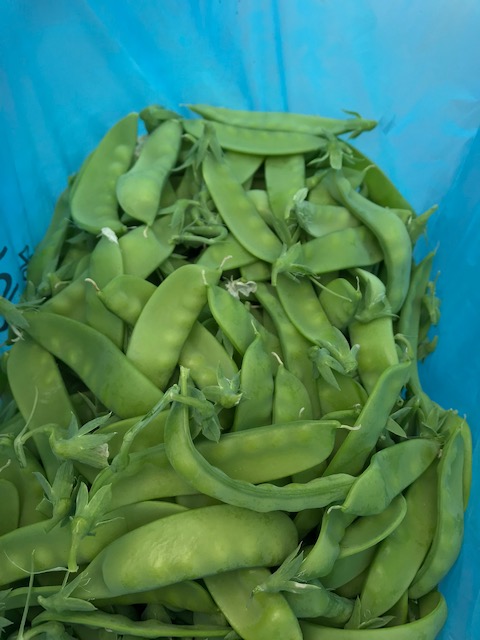
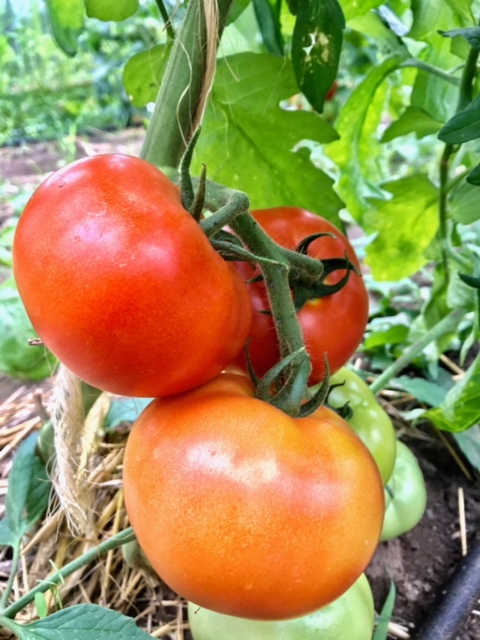



2023 Vegetable Share Options and Prices:
Half Vegetable Share -
Half Vegetable Share with 1 doz. eggs -
Full Vegetable Share -
Full Vegetable Share with 1 doz. eggs -
Full share with 2 doz. eggs -
2023 Vegetable Share Options w/CCF Maple Syrup:
Half Vegetable Share with 1 quart of Maple Syrup -
Half Vegetable Share with 1 doz. eggs and 1 quart of Maple Syrup -
Full Vegetable Share with 1 quart of Maple Syrup -
Full Vegetable Share with 1 doz. eggs and 1 quart of Maple Syrup -
Full Vegetable Share with 2 doz. eggs and 1 quart of Maple Syrup -
To sign up for a vegetable share, please print and fill out the form (link above), then mail with deposit to...
Cobble Creek Farm
407 Hardscrabble Rd.
Olmstedville, NY 12857
Please make checks out to Cobble Creek Farm.
Pick up location for 2023:
Returning North
Country area shareholders will pick up weekly shares every Tuesday or
Friday afternoon (3-6 pm) at 407 Hardscrabble Road, unless other
arrangements have been made for delivery (Inquire by email). New
shareholders will pick up each Friday (3-6 pm) at 407 Hardscrabble Rd.
Queensbury shareholders, your shares will be delivered on Tuesday
afternoons.


Distribution Day at CCF!
Payment:
Full payment must be made by the fist share pick/distribution unless other arrangements have been made. If you have any questions about vegetable shares please contact Paul Allison at paul@cobblecreek.farm
Below are seasonal share samples:
Early Spring
- Kale (baby kale)
- Lettuce (spring mix)
- Hotshot blend mix greens
- Arugula (Astro and Wild)
- Spinach
- Radishes
- Chard
- Rhubarb (as available)
- Snow Peas and Snap peas (late Spring)
- Shell Peas (late Spring)
- Turnips
Summer
- Lettuce Heads (mixed lettuce options)
- Kale (several varieties)
- Arugula
- Beets
- Carrots
- Summer squash (zucchini and yellowneck)
- Parsley (curly and flat leaf)
- Onions (yellow, sweet)
- Basil
- Thyme
- Oregano
- Dill
- Wild Cherry Tomatoes
Late Summer/ Fall
- Lettuce
- Kale (several varieties)
- Cucumbers (market and pickling)
- Tomatoes (sauce and cherry)
- Onions (yellow, sweet, and red)
- Carrots
- Garlic
- Arugula
- Parsley (curly and flat leaf)
- Peppers (bell and hot)
- Pumpkins (cider jack, jack straw, and baby pam)
- Squash (delicata, acorn, butternut, spaghetti, and winter)
- Potatoes (red and yellow)

Produce Index
Arugula
Description: Delicate greens with small leaves and thin stems.
Taste: Slightly spicy and bitter
How to prepare: Wilted, Raw
Cooking Ideas: Pizza topping, Salad, Baked Potato topping
Fun Fact: “Arugula was brought to America by British colonists but it was not until the 1990’s that arugula became known as a popular culinary ingredient in the United States” -https://www.bwqualitygrowers.com/arugula/history-and-facts/
Genovese Basil
Description: Large green leafy herb with a fragrant scent.
Taste: slightly floral and acidic
How to prepare: Raw
Cooking Ideas: Paired with mozzarella and tomatoes, pesto, Basil Lemonade (CCF Recipe Book)
Fun Fact: Similar to some other herbs, basil does not need to be watered as much as most plants. It can live in very dry soil in sunny regions.
Purple Opal Basil
Description: Dark purple basil with magenta flowers.
Taste: “Gingery” and “spicy”
How to prepare: Raw
Cooking Ideas: Pizza topping, in a cocktail, a garnish
Fun Fact: This basil is locally grown in California!
Maxibel Haricot Vert Beans
Description: The typical “green bean” that you see at Farmer’s Markets and canned in the grocery store. These long, thin bean pods are crunchy and contain tiny pale green beans.
Taste: Fresh and crunchy
How to prepare: Raw, Boiled
Cooking Ideas: Salad topping, Casserole
Fun Fact: Other bean varieties in the Maxibel Haricot Vert family can range from yellow to purple in color.
Provider Bush Beans
Description: Your typical green bean. Long bean pod with small squishy seeds inside.
Taste: Crunchy and mild
How to prepare: Raw, Baked, Pan fried
Cooking Ideas: Paired with hummus, Salad topping, Casserole
Fun Fact: It takes 50 days for Provider Bush Beans to mature.
Beets
Description: A sweet, earthy root vegetable. Often red or purple in color. Beet greens are also edible and have a similar taste to chard.
Taste: Sweet and earthy.
How to prepare: bake, pickled, sauteed, raw, pureed
Cooking Ideas: Beet chips, pre-workout juice, baked with sweet potatoes and brussel sprouts
Fun Fact: During the nineteenth century, George Washington used beets, chard and other vegetables to experiment with cross-pollination.
Baby Beets
Description: A smaller version of normal sized beets.
Taste: About the same as normal beets.
How to prepare: the same as normal beets.
Cooking Ideas: Beet smoothie, salad topping, baby food
Fun Fact: “Beets contain betaine, a substance that relaxes the mind and is used in other forms to treat depression. It also contains tryptophan (also found in chocolate), which contributes to a sense of well being.” -https://www.lovebeets.com/fun-facts-tidbits/
Baby Carrots
Description: Petit orange root vegetable.
Taste: A little more bland than the taste of a normal sized carrot.
How to prepare: raw, steamed, sauteed, candied.
Cooking Ideas: Raw with Ranch dressing, Green salad topping
Fun Fact: Despite popular belief, rabbits should not be fed carrots on a daily basis. The sugar in root vegetables and even in fruits can cause tooth decay among rabbits if they eat either of these foods frequently.
Cosmic Purple Carrots
Description: The same as Baby Carrots, just ranging from red to purple in color.
Taste: A little sweeter and earthier than the Baby Carrots.
How to prepare: Same as the Baby Carrots.
Cooking Ideas: Smoothies, Beet, Lentil and Carrot hot salad
Fun Fact: These carrots were created in 2005 in Madison, Wisconsin by Dr. Philip Simon.
Fordhook Chard
Description: Green with a thick stem with rubbery leaves.
Taste: Similar to mixed lettuce, but with a hint of acidity.
How to prepare: steamed, sauteed
Cooking Ideas: Pasta dish, soup, gratin
Fun Fact: Chard is considered to be a “superfood” because of its antioxidants which reduce the risk of heart disease and cancer.
Green Finger Cucumbers
Description: Long, winding cucumber with a dark green color.
Taste: Sweet and salty.
How to prepare: Raw, Marinated
Cooking Ideas: Salad topping, with hummus
Fun Fact: These cucumbers are extremely durable and do not need to be wrapped when they are transported.
National Pickling Cucumbers
Description: A thicker, bumpier cucumber with a very light interior.
Taste: Very similar to Marketmore Cucumber.
How to prepare: Raw, pickling
Cooking Ideas: Pickles, Paired with Ranch dressing, Soaked in water
Fun Fact: It takes 52 days for a National Pickling Cucumber to mature after its planting.
Tasty Green F1 Cucumbers
Description: Long, thin dark green skinned cucumbers which often curl.
Taste: Fresh and firm.
How to prepare: Raw, Baked and Sauteed.
Cooking Ideas: Baked Cucumber Chips, Garnish, Salad topping
Fun Fact: The smallest cucumbers are best for pickling.
Marketmore Cucumbers
Description: Just your classic cucumber. This vegetable has a dark green outer skin with a lighter green and pale white interior.
Taste: sweet, crunchy and fresh
How to prepare: raw, pickled
Cooking Ideas: Summer salads, sandwiches, paired with hummus
Fun Fact: “In France, Cucumbers were not only used for food but also for its anti-aging properties. King Louis XIV used Cucumbers to hydrate and nourish his skin. He valued them so much that he invented greenhouses to ensure he had a Cucumber supply all year long.”
Dill
Description: Herb with a tall stalk and wispy turquoise leaves.
Taste: savory and light
How to prepare: garnish, seasoning
Cooking Ideas: paired with sauteed carrots, in soup, seasoning on chicken (or other meat)
Fun fact: Dill seeds are used for pickling! Try them out today!!
Garlic Scapes
Description: the flower bud of a garlic plant. Looks like curling stalks.
Taste: similar to garlic
How to prepare: roasted, pickled, sauteed etc.
Cooking Ideas: Scape pesto, salad dressing, hummus, frittata
Fun fact: Use these in flower bouquets to add a pop of green!
Carrot Greens
Description: The delicate greens found atop carrots.
Taste: Similar to a bitter herb.
How to prepare: Raw, Baked
Cooking Ideas: Pesto, Sauces, Garnish
Fun Fact: Carrot Greens contain 6x more Vitamin C than Carrot roots!
http://www.carrotmuseum.co.uk/carrotops.html (<--find more cool carrot facts at the Carrot Museum website!)
Mixed Kale
Description: Made up of 2 different types of kale.
Taste: Mild and tender
How to prepare: Raw, roasted, baked
Cooking Ideas: Stuffed in pita, Salad, Smoothie ingredient
Fun Fact: Kale is a great source of Calcium!
Vates Kale
Description: A bluer kale with curled bushy wispy leaves.
Taste: Sweet and crunchy.
How to prepare: Raw, sauteed, baked
Cooking Ideas: Kale chips, Salad, Quiche
Fun Fact: Kale can grow year round, but its peak growth is in the winter and cooler months.
DMR Lettuce Blend
Description: Somewhat of a mixed batch of lettuce. Comes in purple and light green shades.
Taste: Fairly plain.
How to prepare: Raw
Cooking Ideas: Green salad, Sandwiches
Fun Fact: This lettuce blend is resistant to mold!
Hotshot Lettuce Mix
Description: A somewhat random assortment of greens. Colors range from dark purple to green.
Taste: SPICY! Tastes a lot like mustard.
How to prepare: Raw
Cooking Ideas: Green salad, Smoothie
Fun Fact: The spice in these leaves contains anti inflammatory properties.
Mixed Lettuce
Description: just your classic greens, this mix often contains leaves that are purple, green and red.
Taste: no distinct spice/flavor
How to prepare: wash and serve
Cooking Ideas: Summer salads, smoothies, sandwiches, you name it
Fun Fact: source of vitamins A, C, and E, calcium, and potassium
New York Early Onions
Description: Classic yellow onion with a brown outer shell.
Taste: Sweet at first and then spicy.
How to prepare: Candied, Raw, Baked.
Cooking Ideas: Omelette topping, Onion fritters, part of stir fry
Fun Fact: If you really hate crying while slicing onions you can invest in your own “Tears free Onion Goggles”!! Only $19.95!!!
Red Onion
Description: Grown from a bulb, has maroon outer skin.
Taste: Sweet.
How to prepare: Grilled, braised and pickled.
Cooking Ideas: Bruschetta, Burritos and Salad Topping
Fun Fact: Red Onions are native to Turda, Romania, Tropea, Italy and Connecticut, US.
Italian Flat Leaf Parsley
Description: A multi branched plant with delicate lace-like leaves.
Taste: Similar to carrot greens, bittersweet.
How to prepare: Raw, ground
Cooking Ideas: A garnish to meat or fish, Tabbouleh, add to stocks and soups!
Fun Fact: “The ancient Greeks used parsley for both medicinal purposes, as well as for the adornment of athletes and the tombs of the dead. The Grecian use of parsley as a medicinal herb may have influenced its use in Ayurvedic practices in India. The dried stems and leaves can be powdered and used as a green dye or food coloring”. -http://www.specialtyproduce.com/produce/Italian_Parsley_309.php
Bangles Blend Peppers
Description: Small, dwarf-like peppers. These range in color from green to yellow to a deep red.
Taste: Crisp with a hint of spice.
How to prepare: Raw, Grilled, baked
Cooking Ideas: Salad topping, paired with hummus, Stuffed!
Fun Fact: These peppers can be preserved by drying or by being stuffed and then canned.
Bell Pepper
Description: Larger soft peppers that are crisp and crunchy.
Taste: Ranging from bland to sweet.
How to prepare: Raw, Pickled, Sauteed
Cooking Ideas: Omelette addition, Tapenade, Veggie Platter
Fun Fact: “Bell peppers are a botanical fruit and member of the Capsicum annuum family. They are not a pepper as their name suggests. This was a false name given to them upon their discovery, as they have peppery flavored qualities.” -https://www.specialtyproduce.com/produce/Large_Green_Bell_Peppers_1238.php
Jalapeno Pepper
Description: A small, spicy pepper with dark green flesh.
Taste: SPICY! This spice ranges based on the pepper, but BE CAREFUL!!
How to prepare: Raw, ground
Cooking Ideas: A garnish, In guacamole
Fun Fact: The Jalapeno Pepper is Texas’ state pepper.
Baby Pam Pie Pumpkins
Description: A type of squash that has stringless, orange flesh.
Taste: sweet and earthy.
How to prepare: Puree, broiled
Cooking Ideas: Pie, Cado, salad topping
Fun Fact: Pumpkins are in the same family as cucumbers, summer squash, winter squash, melons and gourds called the Cucurbitaceae family.
Jack Straw Pumpkin
Description: The typical Jack O’Lantern pumpkin.
Taste: Smooth and sweet
How to prepare: Same as Baby Pam Pie Pumpkin.
Cooking Ideas: Same as Baby Pam Pie Pumpkin.
Fun Fact: Make sure to avoid cutting your pumpkin stems too short as it causes rot throughout the vegetable.
Radishes
Description: A red bulb-like root vegetable with a long thin root.
Taste: Mustardy and crunchy.
How to prepare: Raw, grilled, pickled
Cooking Ideas: Pizza topper, Salad and raw snack food!
Fun Fact: A Makki Ki Roti is a Punjabi corn cake consisting of ground up radish and corn meal.
Bagheera F1 Squash
Description: Look like deep green pumpkins.
Taste: Dense and rich flavor!
How to prepare: Cooked and baked.
Cooking Ideas: Spaghetti squash and pies.
Fun Fact: These squash are annuals!
Butternut Squash
Description: Thick, tan colored squash with a bulbous head.
Taste: Sweet and nutty.
How to prepare: Baked, braised and grilled.
Cooking Ideas: Soup, pancakes and ravioli.
Fun Fact: Charles A. Leggett gave the Butternut squash its named and described the Butternut’s flavor as, “smooth as butter and sweet as a nut.”
Delicata Squash
Description: Light yellow colored squash with deep green grooves.
Taste: Similar to a sweet potato.
How to prepare: Curried, stewed and roasted.
Cooking Ideas: Curry, Quiche, and Salad topping.
Fun Fact: It takes squash 80 to 100 days to mature before they are ready to be picked.
Reba Acorn Squash
Description: Round, dark green squash with curly stems.
Taste: Earthy and sweet.
How to prepare: Baked and broiled.
Cooking Ideas: Soup and baked goods.
Fun Fact: These squash have a spot where their flesh changes to the color orange or yellow.
Red Kuri Squash
Description: A hubbard squash in the shape of a water droplet.
Taste: creamy and smooth.
How to prepare: Pureed, baked and broiled.
Cooking Ideas: Soup, Enchiladas and muffins.
Fun Fact: This squash is native to Japan as of 1978 when it was introduced to the country.
Yellowneck Squash
Description: Thin, lengthy squash with a yellow outer coat and a white interior.
Taste: buttery and smooth
How to prepare: sauteed, pureed
Cooking Ideas: Lasagna, soup, salad
Fun Fact: Squash blossoms are a delicacy throughout much of the United States. They are often stuffed with either cheese or something else when they are prepared.
Snow Peas
Description: Small green flat pea pods filled with up to five tiny peas.
Taste: Sweet and crisp.
How to prepare: Raw, candied and blanched.
Cooking Ideas: Stir fry, salad and in a Quinoa bowl!
Fun Fact: Snow Peas originated in India.
Caiman F1 Tomatoes
Description: Classic round, juicy tomato with seeds and a soft outer flesh.
Taste: Watery and fresh
How to prepare: Raw, Spiced, or Baked
Cooking Ideas: Tomato, basil and Mozzarella Salad, on sandwiches
Fun Fact: These tomatoes are apart of the Solanaceae family and are tender annuals, similar to peppers, potatoes etc. that are found in a warm climate.
Matt’s Wild Cherry Tomatoes
Description: Miniature versions of Caiman F1 Tomatoes. These grow in leaflet bunches of about 8 tomatoes.
Taste: Sweet!!!!
How to prepare: Raw, Sauteed, Baked
Cooking Ideas: Pizza topping, Salad topping, Paired with hummus
Fun Fact: Paul Allison’s favorite tomato!!
Purple Top Turnips
Description: A root vegetable with a violet top half and and white lower section. Roots are stringy.
Taste: sweet with an airy taste.
How to prepare: Raw, boiled, pan fried
Cooking Ideas: paired with hummus, salad topping, a side
Fun Fact: Good source of nutrition for livestock.
Zucchini
Description: This summer squash has a green outer casing with a white, soft interior.
Taste: mild to sweet flavor
How to prepare: sauteed, grilled, baked
Cooking Ideas: Chocolate chip zucchini bread, kabob, baked zucchini fries
Fun Fact: One zucchini is called a “zucchina.”
Week 5: July 10 and 13
Mixed Kale, Beets, Radishes, Fordhook Chard, Snow Peas
Week 6: July 17 and 20
Baby Carrots, Carrot Greens, Oregon 2 Snow Peas, Italian Flat Leaf Parsley, Vates Kale, DMR Lettuce, Hotshot Lettuce Mix, Beets
Week 7: July 24 and 27
Dill, Carrots, Italian Flat Leaf Parsley, Zucchini, Provider Bush Beans, Oregon 2 Snow Peas, Genovese Basil and Purple Opal Basil
Week 8: July 31 and Aug 3
New York Early Onions, Italian Flat Leaf Parsley, Beets, Yellowneck Squash, Zucchini, Provider Beans, Maxibel Haricot Vert Beans and Marketmore Cucumbers
Week 9: Aug 7 and 10
Onions, Basil, Cucumber Mix, Kale, Maxibel Haricot Vert, Tomato Mix, Beets, Cosmic Purple Carrots and Zucchini
Week 10: Aug 14 and 16
Yellow Onions, Carrots, Basil, Parsley, Cucumbers, Zucchini, Beans, Yellowneck Squash, Caiman F1 Tomato and Freckles Lettuce (Qby)
Week 11: Aug 21 and 24
Beets, Basil, Tomatoes, Carrot varities, Summer Squash, Red and Yellow Onions, Pepper Mix and Chard Mix
Week 12: Aug 28 and 31
Tomatoes, Cucumbers, Iflp, Chard, Summer Squash, Peppers, Basil and Carrots
Week 13: Sept 4 and 7
Caiman F1 Tomatoes, Matt’s Wild Cherry Tomatoes, Red Ace Beets, Jack Straw Pumpkin, Yellow Onions, Provider Beans and Last of Cucumbers
Week 14: Sept 11 and 14
Caiman F1 Tomatoes, Matt’s Wild Cherry Tomatoes, Scarlet Nantes Carrots, Baby Pam Pie Pumpkins, Maxibel Haricot Vert Beans, Last of Zucchini and Beets
Week 15: Sept 18 and 21
Delicata Squash, Red Kuri Winter Squash, Butternut Squash, Sweet Reba Acorn Squash, Baby Pam Pie Pumpkins, Red and Yellow Onions and Beets.
Sources:
https://www.highmowingseeds.com/organic-non-gmo-provider-bush-bean-a.html 



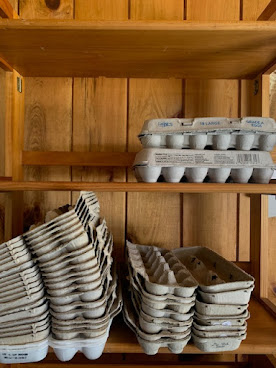
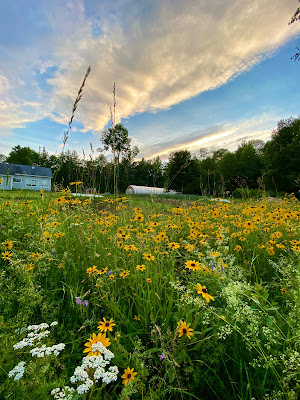
Comments
Post a Comment